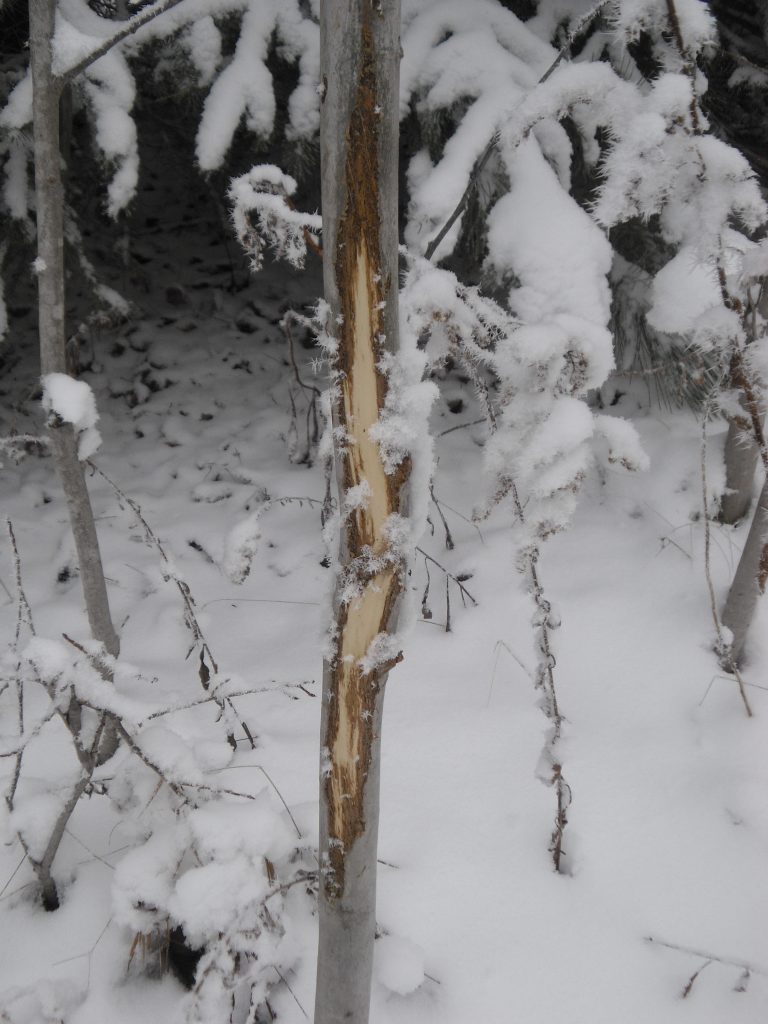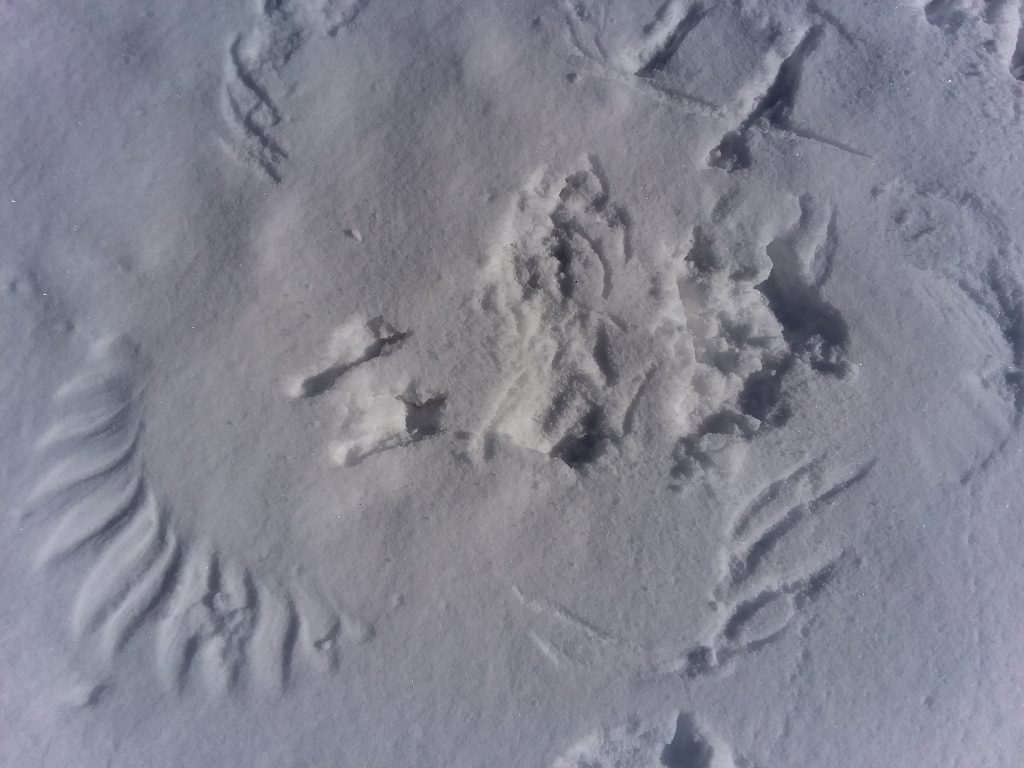“Sleigh bells ring, are you listening?” Oops! Sorry, wrong adventure. But I could hardly help myself with that title. Seriously, winter is a great time of year to get outside and experience the natural world. The joke among some of my friends is that winter is a time of “no snakes, no bugs” and so becomes an ideal time to visit the woods. As long as someone is wearing sufficient and proper clothing, remains adequately fueled and hydrated, and keeps a positive attitude the winter woods can provide great enjoyment.
Most of us who live in snow country and would be inclined to spend some time in a wild area during the winter probably already have appropriate clothing for at least a short walk. Start by protecting your extremities with warm socks, water-resistant boots, gloves or mittens, and a hat that can protect your ears. Our hands, feet, and head are the first areas affected by cold and they need to be kept warm. Other articles of clothing should include a good insulation base layer for our legs, arms, and body followed by a mid-layer of wool or synthetic fiber that permits ventilation, and a wind-proof outer layer. Protecting our body from the cold and snow is the first step to fully enjoying our time outside.

Some food and water is an important consideration, even for a brief walk outside, and particularly if you are new to winter recreation or are accompanied by children. Many people do not notice the initial phases of dehydration in the cold, so we need to drink long before we notice we are thirsty. When it is cold enough that we can “see our breath” we are given a visual reminder that we are exhaling water vapor. We need to keep replacing that moisture. Snack foods like chocolate, nuts, hard candy, and granola bars are not really affected by the cold and can give both a physical and mental boost. The extra energy calories help to keep us warm and the snacks can also help us to keep that positive attitude.
There are many places we can go to experience a natural environment in winter, even in urban areas. Just about any location is not too far from city, county, state, or national park areas and most are open in the winter and have marked trail systems of various lengths. Of course, further afield there are many public resources, such as game management areas, that are mostly used during hunting season and are open for recreation. During the winter with any snow cover, all of these parks and preserves will show evidence of the passing of animals (tracks and scat) as well as a chance to see a large variety of birds. Some tracks could be surprising depending on the area and you may see evidence of deer, turkeys, coyotes, or other animals that are native to your area. A wildlife guidebook that is specific to your region will let you know what might be there and help identify the sign that you see.

Winter provides a special opportunity to enter into the natural world. Often birds and animals are somewhat easier to observe and certainly tracks in the snow provide evidence of the local wildlife. With minimal preparation, anyone can enjoy a brief afternoon sojourn or even a day-long snowshoe or cross country ski trek. The main idea is to get outside and experience nature in an environment that may have some surprising evidence to reveal.
